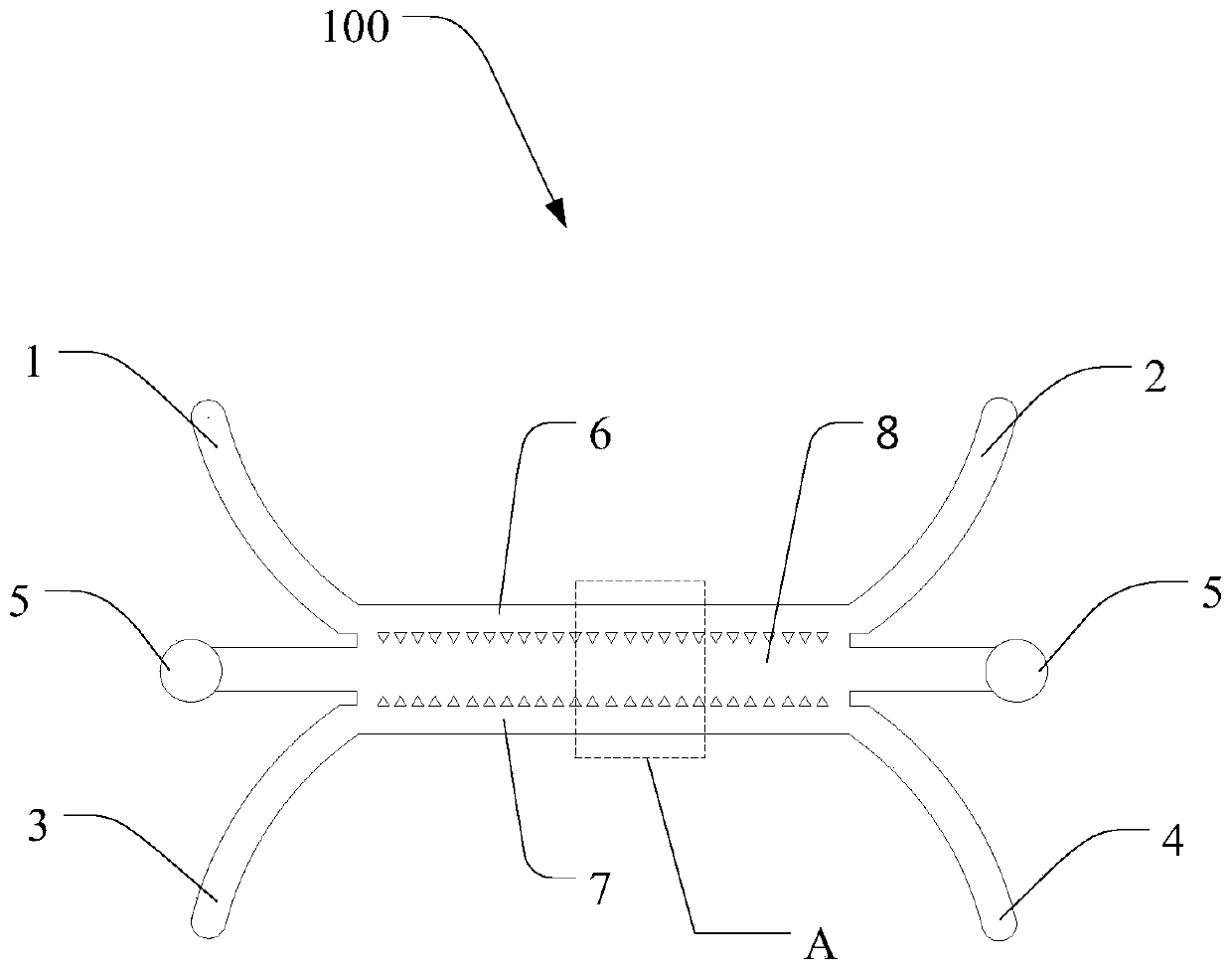Construction method for human intestinal tract epithelial cell model
A technology of intestinal epithelial cells and construction methods, applied in the field of cell model construction, can solve problems such as long time required, difficulty in large-scale application, complicated cell inoculation process, etc.
- Summary
- Abstract
- Description
- Claims
- Application Information
AI Technical Summary
Problems solved by technology
Method used
Image
Examples
Embodiment 1
[0086] (1) Preparation of intestinal cell suspension: first prepare DMEM complete medium: 88% DMEM high glucose medium + 10% FBS + 1% double antibody + 1% non-essential amino acid. Take the purchased Caco-2 cells stored in liquid nitrogen, melt them in a 37°C water bath, add 10 times the complete DMEM medium dropwise, mix well, and centrifuge at 1200rpm for 5min; discard the supernatant, and transfer to a centrifuge tube Add DMEM complete medium to resuspend the cells, count and adjust the cell density to l×l0 6 cell / mL, then inoculated into culture flasks, and placed the culture flasks at 37°C, 95% humidity, 5% CO 2 Concentration in the incubator for static culture (replace the culture medium every two days). Until the Caco-2 cells were cultured until the cell confluence reached 80-90%, the intestinal cell suspension was collected, and the intestinal cell concentration in the intestinal cell suspension was adjusted to (2.0-3.0)×10 7 cell / mL is the obtained intestinal cell s...
Embodiment 2
[0093] (1) Preparation of intestinal cell suspension: first prepare DMEM complete medium: 88% DMEM high glucose medium + 10% FBS + 1% double antibody + 1% non-essential amino acid. Take the purchased Caco-2 cells stored in liquid nitrogen, melt them in a 37°C water bath, add 10 times the complete DMEM medium dropwise, mix well, and centrifuge at 1200rpm for 5min; discard the supernatant, and transfer to a centrifuge tube Add DMEM complete medium to resuspend the cells, count and adjust the cell density to l×l0 6 cell / mL, then inoculated into culture flasks, and placed the culture flasks at 37°C, 95% humidity, 5% CO 2 Concentration culture in the incubator (replace the culture medium every other day). Until the Caco-2 cells were cultured until the cell confluence reached 80-90%, the intestinal cell suspension was collected, and the intestinal cell concentration in the intestinal cell suspension was adjusted to (2.0-3.0)×10 7 cell / mL is the obtained intestinal cell suspension....
Embodiment 3
[0100] (1) Preparation of intestinal cell suspension: first prepare DMEM complete medium: 88% DMEM high glucose medium + 10% FBS + 1% double antibody + 1% non-essential amino acid. Take the purchased Caco-2 cells stored in liquid nitrogen, melt them in a 37°C water bath, add 10 times the complete DMEM medium dropwise, mix well, and centrifuge at 1200rpm for 5min; discard the supernatant, and transfer to a centrifuge tube Add DMEM complete medium to resuspend the cells, count and adjust the cell density to l×l0 6cell / mL, then inoculated into culture flasks, and placed the culture flasks at 37°C, 95% humidity, 5% CO 2 Concentration in the incubator for static culture (replace the culture medium every two days). Until the Caco-2 cells were cultured until the cell confluence reached 80-90%, the intestinal cell suspension was collected, and the intestinal cell concentration in the intestinal cell suspension was adjusted to (2.0-3.0)×10 7 cell / mL is the obtained intestinal cell su...
PUM
 Login to View More
Login to View More Abstract
Description
Claims
Application Information
 Login to View More
Login to View More - R&D
- Intellectual Property
- Life Sciences
- Materials
- Tech Scout
- Unparalleled Data Quality
- Higher Quality Content
- 60% Fewer Hallucinations
Browse by: Latest US Patents, China's latest patents, Technical Efficacy Thesaurus, Application Domain, Technology Topic, Popular Technical Reports.
© 2025 PatSnap. All rights reserved.Legal|Privacy policy|Modern Slavery Act Transparency Statement|Sitemap|About US| Contact US: help@patsnap.com



